Research Article - (2022) Volume 11, Issue 3
Background: High-throughput sequencing technologies are increasingly generating data of all species including fungi. Therefore the first challenge of omics data was the design and use of electronic databases to store and manage the stormy amount of knowledge. In biological experiments, biological databases for structure and function analysis and estimation are immensely beneficial. A multitude of such databases are currently available, which help in the comprehension of complicated problems relating to fungal species.
Objectives: As a result, we have assembled almost all fungal databases from previously published works into one platform, with the aim of saving and providing an easy, coordinated platform to the entire fungi research community.
Methods: 82 fungal databases were compiled and grouped into 5 categories based on their various properties, including the Genomic database, Proteomic database, Transcriptomics database, Pathway database, and Structure database.
Results: Under numerous conditions, the available resources have led to the efficient understanding of fungal databases. Each category is given with a brief introduction; users can query the appropriate information in two ways, by clicking image expression icon, or by typing directly name in the query-bar which is on the top of the database. FDBC is developed in PHP, HTML, CSS, MySQL, and JavaScript.
Conclusion: We have provided a set of fungal databases from previously published work, and have built the database of these databases named “FDBC (Fungal Databases Collection)” will be modified in due time.
FDBC • Fungi • Fungal database • Genomic • Fungal research community
The fungal kingdom contains approximately 2.2-3.8 million heterotrophic eukaryotes, the majority of which are observable and substrate-dwelling [1]. Massive study has been done in various areas of fungal research, such as the use of genomic (DNA sequencing) data in barcoding and Meta barcoding attempts to examine fungal species [2-5]. Incorporating molecular phylogenetic data allowed for more precise genealogical findings, which revolutionized fungi classification [6,7], and next-generation sequencing technologies are increasingly generating data on all species, including fungi and yeast [8], therefore the first challenge of omics data was the design and use of electronic databases to store and manage the stormy amount of knowledge.
For that manual database curation is made to make sure that biological information and knowledge are communicated in modern times [2,9]. A complete computer representation of the cell and the organism, which will allow computational prediction of higher-level complexity of cellular processes and behavior of organisms from omics data, is a major challenge in the post-genomic period [10]. Scientists have been enthralled by the definition and potential of system biology, which aims to bring together data from a variety of omics approaches (such as genomics, Transcriptomics, proteomics, and metabolomics) to provide a more integrative picture of cells, species, and populations in terms of their development, growth, evolution, and infection resistance [8,11,12].
so, a key role in bioinformatics is played by the biological databases, they allow scientists to access a large number of relevant biological data, having a broader variety of species in the genetic sequences [13], to organize and categorize these multi-omics data in the kingdom of fungi. Huge databases have been published in multiple research point of the fungi, such as “Genomic databases”, OriDB [14], MycoBank [15], “Proteomic databases” (YAAM) [16], “Structure databases ”PROPHECY [17], “Pathway databases”, Yeast Net [18], and “Transcriptome databases” YeasTSS [19], “AGD 3.0” [20]. To make it simpler, we've gathered all of these databases into one platform called FDBC, where we've thoroughly curated and integrated 82 Fungal databases based on scientific work. There were multiple ways to access the data, as well as original links and brief explanations for each database. Our archive, when combined, can be useful and modified over time for further Fungal research analysis.
Construction of the database
The FDBC database is constructed in a very easy way; computer platform has been used, such as Php, HTML, CSS, JavaScript, and MySQL. The data has been collected from many search engines, e.g., Google, Google Scholar and PubMed. Many keys words have been used to search the data, such as, “Fungal databases”, “databases of Fungi”, “fungus huge databases", and so on. For confirmation, we have manually checked every database carefully and have removed all outdated and dead links. Further our database has updated data and will be updated timely. For more and easy understanding, we have given the flow diagram of FDBC (Figure 1).
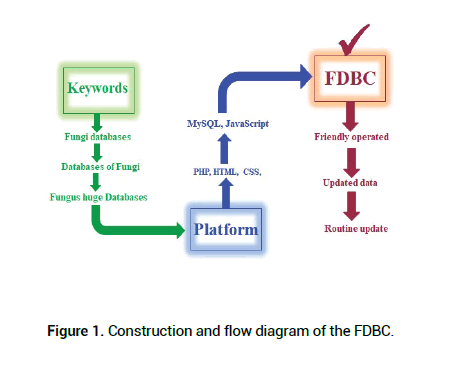
Figure 1: Construction and flow diagram of the FDBC.
Usage of the databases
We have offered the usage of the databases very friendly and easy manner, user can search the interesting database in 3 ways, first, for a single query can direct type the name of the needed databases in the given search bar, Which is highlighted in Figure 2A, for category wise search can click on the Image expression icon or name of the category Figure 2A, that will direct leads to all the category databases list Figure 2B, for example by clicking genomic image, will give 54 genomic databases on single click, user can choose their needed database, further clicking will lead to a short introduction and official link of the needed query (Figure 2A).
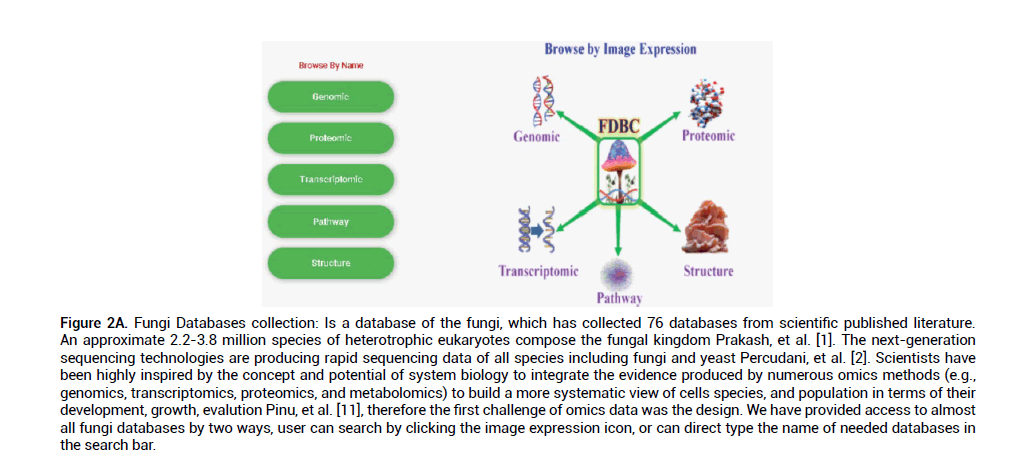
Figure 2A: Fungi Databases collection: Is a database of the fungi, which has collected 76 databases from scientific published literature. An approximate 2.2-3.8 million species of heterotrophic eukaryotes compose the fungal kingdom Prakash, et al. [1]. The next-generation sequencing technologies are producing rapid sequencing data of all species including fungi and yeast Percudani, et al. [2]. Scientists have been highly inspired by the concept and potential of system biology to integrate the evidence produced by numerous omics methods (e.g., genomics, transcriptomics, proteomics, and metabolomics) to build a more systematic view of cells species, and population in terms of their development, growth, evalution Pinu, et al. [11], therefore the first challenge of omics data was the design. We have provided access to almost all fungi databases by two ways, user can search by clicking the image expression icon, or can direct type the name of needed databases in the search bar.
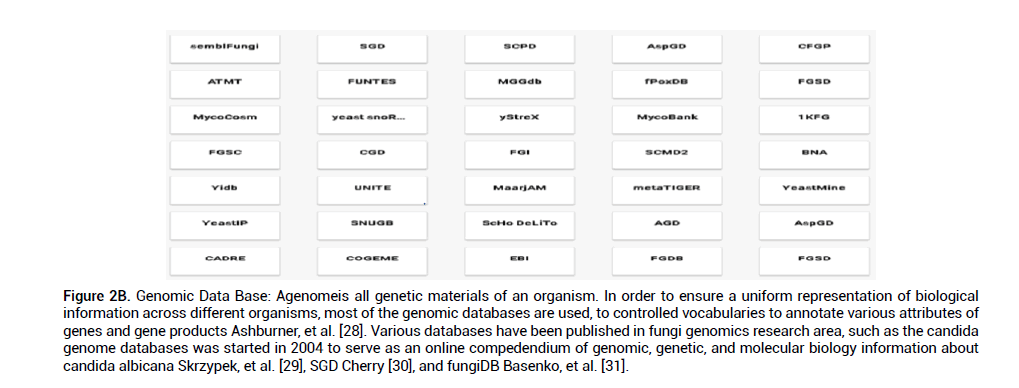
Figure 2B: Genomic Data Base: Agenomeis all genetic materials of an organism. In order to ensure a uniform representation of biological information across different organisms, most of the genomic databases are used, to controlled vocabularies to annotate various attributes of genes and gene products Ashburner, et al. [28]. Various databases have been published in fungi genomics research area, such as the candida genome databases was started in 2004 to serve as an online compedendium of genomic, genetic, and molecular biology information about candida albicana Skrzypek, et al. [29], SGD Cherry [30], and fungiDB Basenko, et al. [31].
Classification of the database
According to previously published work [21], many articles have been online with their classification based on species or components [22-24], e.g., human [25], plant [26]. As a result, fungal databases can be categorized based on a number of requirements, including "Genomic databases," "Proteomic databases," "Transcriptomics databases," "Pathway databases," and "Structure databases." Some of the more well-known database’s examples are presented in the form of figures in each category, with information and implementations provided below.
Genomic databases
A genome is all genetic material of an organism. To ensure a uniform representation of biological information across different organisms [27], most of the genomic databases are used, to controlled vocabularies to annotate various attributes of genes and gene products [28]. Various databases have been published in fungi genomic research area, such as “The Candida Genome Database” [29] was started in 2004 to serve as an online compendium of genomic, genetic, and molecular biology information about Candida albicans, shown in Figures 3A and 3B [29] is a well-known genomic database named “SGD” that allows the exploration of functional interactions between sequence and gene products in fungi and other species [30], and “Fungi DB” [31].
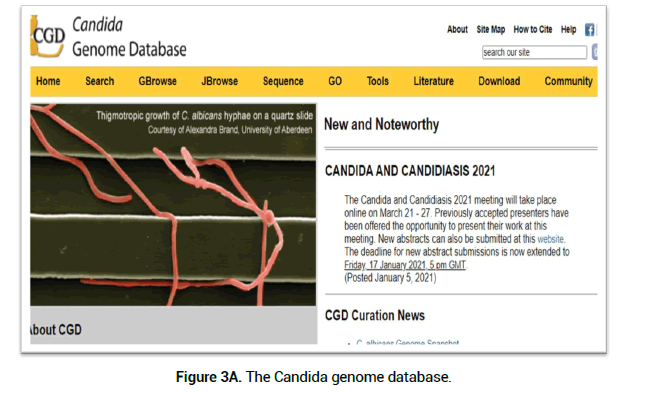
Figure 3A: The Candida genome database.
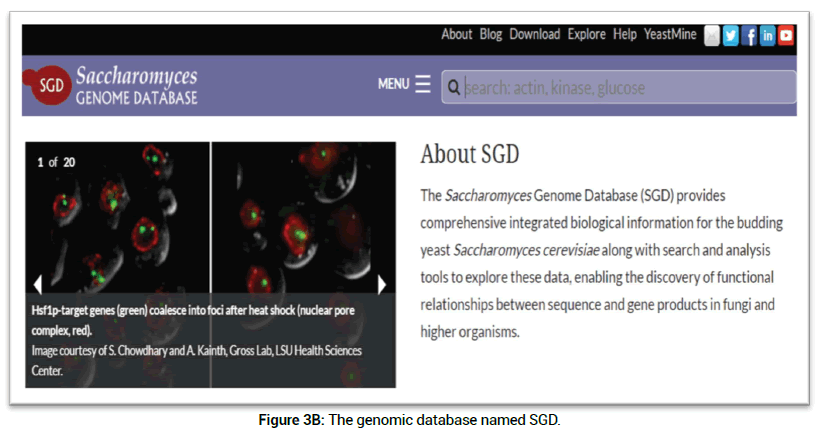
Figure 3B: The genomic database named SGD.
Proteomic databases
The main challenge in fungal biology is to understand the expression, function, and regulation of the whole set of proteins encoded by fungal genomes [32], Which is a wide-ranging numerical description of protein expression and its variation under the inspiration of biological concerns such as drug treatment, or diseases [33].To overcome these challenges there are several fungal proteomics databases have been published, such as Figure 3C is the “Fungal Secretome Database (FSD)” which includes secretome data on 525 species with 587 datasets [34], Figure 3D “e-Fungi “provides genomic and functional data for the 34 fairly diverse fungal genomes and oomycetes [35], “FGMP” [36], which describes the study of fungal proteome and is shown in Figure 3D.
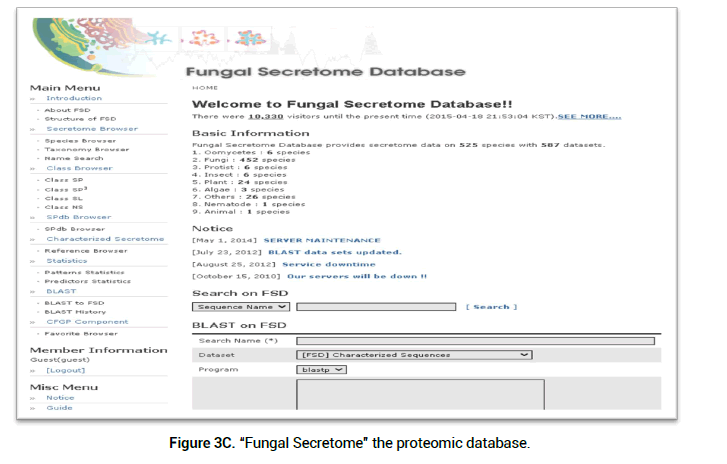
Figure 3C: “Fungal Secretome” the proteomic database.
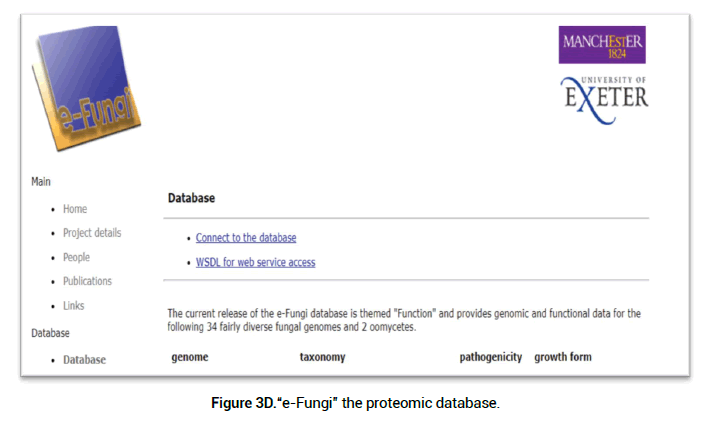
Figure 3D: “e-Fungi” the proteomic database.
Transcriptomics databases
Transcriptomics is the study of global change of gene expression at mRNA level [32], which regulates the major process to control location, timing, and quantity of gene expression [37]. To save these all data several transcriptomic databases have been built and giving such huge information on friendly finding ways, for example, Figure 4A, The Fungal Transcription Factor Database (FTFD) is developed to integrate the putative fungal Transcription Factors (TFs) with references, provides sequences, the taxonomic and phylogenomic background and the overall sketch of all fungal TFs [38], “YeTFaSCo” is designed for motif analysis, including sequence scanning and pre-computed gene-browser detection of motif occurrences across the entire yeast genome, shown in Figure 4B [39].
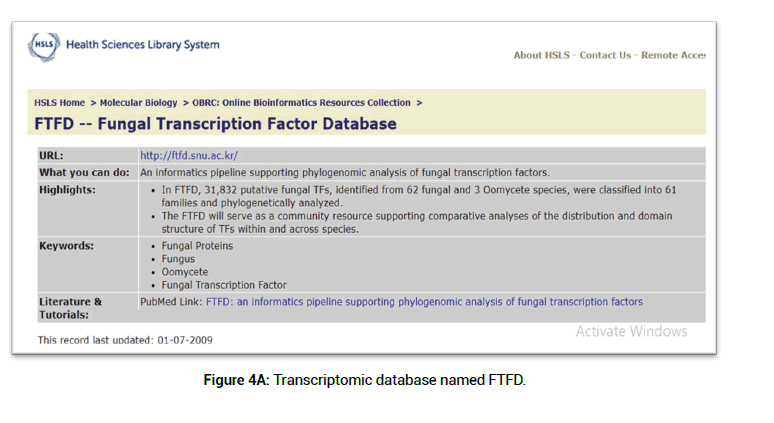
Figure 4A: Transcriptomic database named FTFD.
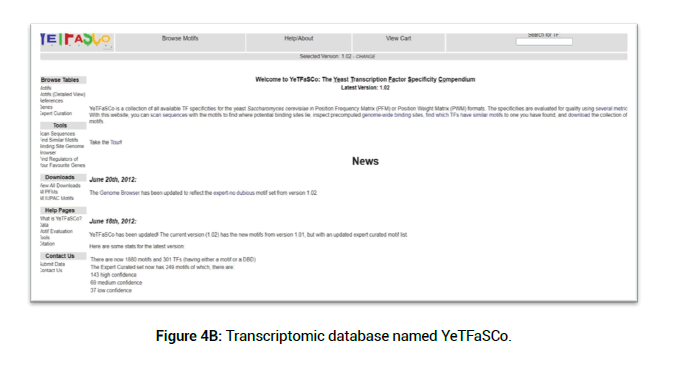
Figure 4B: Transcriptomic database named YeTFaSCo.
Pathway databases
The pathway is the framework for molecular biology. Fungal pathway databases attempt to demonstrate the relations between genes, proteins, and metabolites, which is crucial for understanding the various mechanisms that exist within the cell [40-42]. Fungi pathway diagram databases are useful for researchers who want to contribute, interpret, and visualize omics data, which is used to simplify more complex analytical activities like cellular modeling [43]. Numerous fungi pathway databases have been usable in scientific research, some of them are “KEEG Yeast” [44], “Yeast Net” Figure 4C is the probabilistic adaptive gene network for baker's yeast, Saccharomyces cerevisiae, was a leading model organism for eukaryotic genetics and cell biology. Massive volumes of data from a wide range of laboratory and analytical experiments have been penetrated the Yeast Net. This single gene network thus offers an interconnected and detailed knowledge portal to promote numerous biological studies [45], Figure 4D is a “Yeast Cyc” which is a Pathway Database of the eukaryote model Saccharomyces cerevisiae which is part of the broader Bio Cyc set of thousands of Pathway Databases for sequenced genomes comprising metabolic pathways, reactions, enzyme and compound details (Figure 4D) [46].
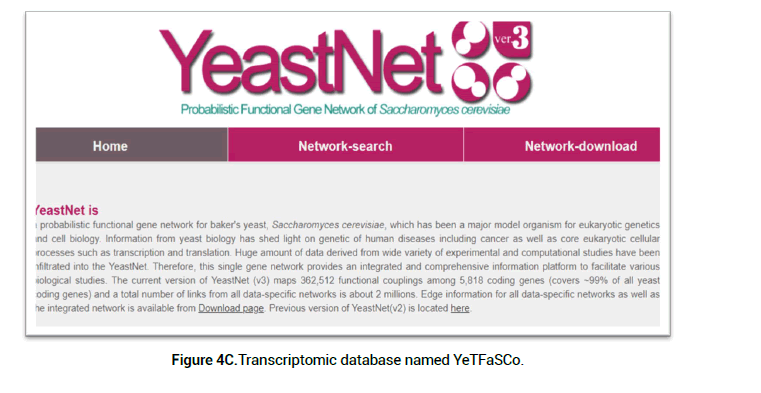
Figure 4C: Transcriptomic database named YeTFaSCo.
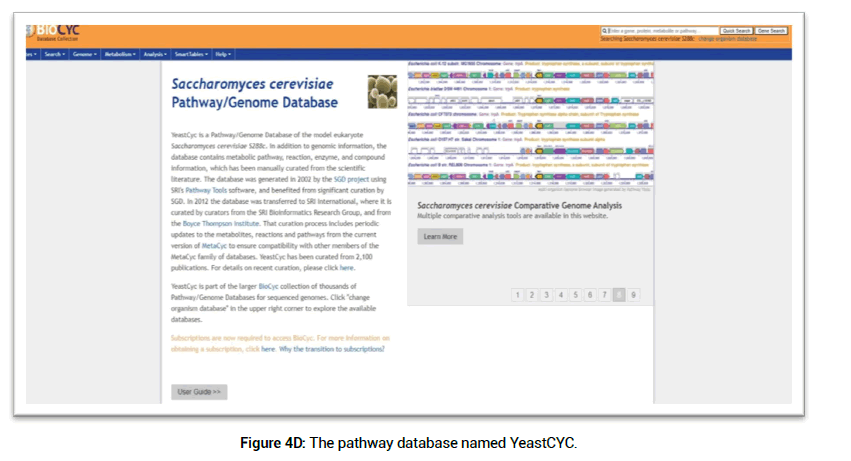
Figure 4D: The pathway database named YeastCYC.
Structure databases
Fungal structural databases are the experimental determination of fungi structure, which aimed to organized and annotate useful information of the fungi [47], It contains information that has been gathered in the context of structural databases due to the distinct morphological stages and different structures. Some well-known and relevant databases that provide structural data for fungi are listed, such as in Figure 5A “PROPHECY” database tests the phenotype of the deletion strain based on growth activity during microcultivation. it quantifies growth aberrations by calculating growth rate, growth efficiency, and adaptation time [17]. Figure 5B is a database named “Bio Models” a resource that enables the storage and sharing of published, peer-reviewed quantitative, interactive models of biological processes. Model elements and actions are carefully tested to fit the initial publication and manually curated to ensure reliability (Figure 5B) [48].
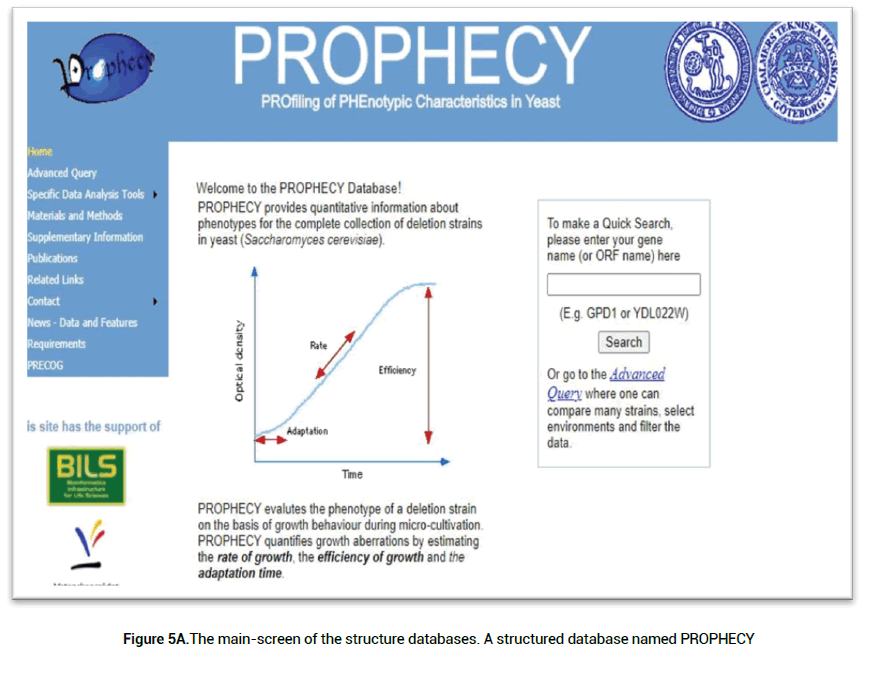
Figure 5A: The main-screen of the structure databases. A structured database named PROPHECY

Figure 5B: TThe main-screen of the structure databases. BioModels a structured database.
Statistics of the database
In this work, we provided access to all fungal databases, and have shown the category-wise, Chronological order, and percentile development of the fungi databases. Figure 6A shown the categories wise growth of the fungal databases, which is the enormous growth and accomplishment for the mycological community, among these categories the genomic data is strengthened well over time. Figure 6B reflects the data chronology, which shows decreased after 2015 due to many broken and outdated links, that we have removed all the dead links and given a fresh and revised for the mycological community, while Figure 6C is a simple percentile of the FDBC data (Figure 6C).
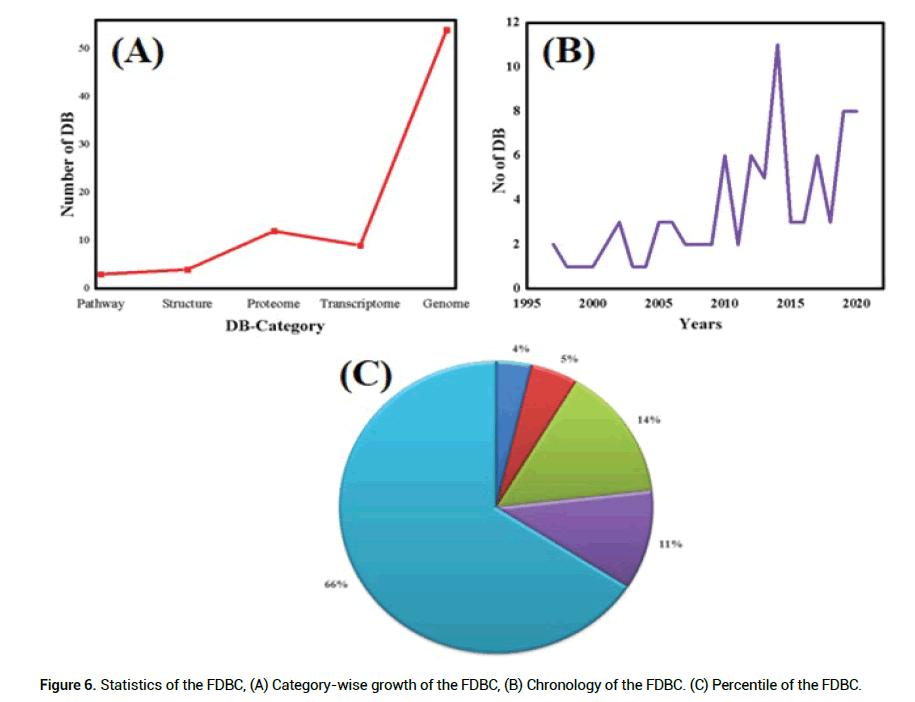
Figure 6: Statistics of the FDBC, (A) Category-wise growth of the FDBC, (B) Chronology of the FDBC. (C) Percentile of the FDBC.

Development of new features
Several articles have been published in well-reputed journals such as “Path guide: A pathway resource list” published in Nucleic Acids Research, “Biological Databases for Human Research “published in genomic proteomic and bioinformatics Journal, which have collected updated databases in the form of tables, for more understanding we have compared our work with previously published research in the Table 1. In the current study, we have provided a table as well as developed a database by a novel way of representation, which hasn’t been built and published before in such an easy and friendly searching way. Shortly, we have the planned future development of new features in the article, such as Figure 5A simply gives the category information by clicking image expression.
| PMID | Species or component | Type of the data | No of DB | Journal name |
|---|---|---|---|---|
| FDBC | Fungi | Table+DB | 82 | |
| 28179406 | Fungi | Table | 24 | Journal of Clinical Microbiology |
| 25712261 | Human | Table | 74 | Genomic, Proteomic & Bioinformatics (GPB) |
| 31906604 | Nucleic acid | Table | 70 | Nucleic Acids Research (NAR) |
| 7764641 | DNA+Protein | Table | 50 | Current Opinion in Biotechnology |
| 18265344 | Protein | Table | 121 | Current Protocols in Molecular Biology |
Table 1. Comparison table of the FDBC with other published work.
In modern scientific work, databases are the first phase in almost all of the biological research fields, which assists the researchers in all aspects, many useful databases have been published and going to be published for easy searching, to avoided displacement or disorders of such data, several articles have been published which compiled databases of different species or components, such as “Human”, “Plant”, “Proteins”. Therefore, a decent collection of fungal databases is also needed to save, manage, and organized the fungal databases for future and easy searching, so that we have provided a set of fungal databases from previously published work, and have built the database of these databases named “FDBC (Fungal Databases Collection)” that have divided into five categories with a short description, and gives easy access to all the data. FDBC enables users to search a database by typing the name of the database in the search bar, or by clicking on an image category expression or a name of the category. Besides, the data in our database has been updated and will be updated over time.
Ethics approval and consent to participate
Not applicable.
Consent for publication
Not applicable.
Availability of data and materials
These data will be available under the journal rule and regulation.
Competing interests
The authors don’t have any compete of interests.
Funding
This project is supported by National Natural Science Foundation of China [32100434] and Shenzhen's introduction of talents and research start-up [392020].
Dr. Shahid Ullah and Dr. Tianshn Gao designed and supervised the project, performed data analysis. Farhan Ullah, Wajeeha Rahman, Muhammad Ijaz,and Gulzar Ahmad, contributed to data analysis. Dr. Shahid Ullah wrote the manuscript. All authors reviewed the manuscript.
To avoid future conflict, we would like to say that, our database is uploaded on S Khan Lab so that we have provided some content in this article.
[Cross ref] [Google scholar] [PubMed]
[Cross ref] [Google scholar] [PubMed]
[Cross ref] [Google scholar] [PubMed]
[Cross ref] [Google scholar] [PubMed]
[Cross ref] [Google scholar] [PubMed]
[Cross ref] [Google scholar] [PubMed]
[Cross ref] [Google scholar] [PubMed]
[Cross ref] [Google scholar] [PubMed]
[Cross ref] [Google scholar] [PubMed]
[Cross ref] [Google scholar] [PubMed]
[Cross ref] [Google scholar] [PubMed]
[Cross ref] [Google scholar] [PubMed]
[Cross ref] [Google scholar] [PubMed]
[Cross ref] [Google scholar] [PubMed]
[Cross ref] [Google scholar] [PubMed]
[Cross ref] [Google scholar] [PubMed]
[Cross ref] [Google scholar] [PubMed]
[Cross ref] [Google scholar] [PubMed]
[Cross ref] [Google scholar] [PubMed]
[Cross ref] [Google scholar] [PubMed]
[Cross ref] [Google scholar] [PubMed]
[Cross ref] [Google scholar] [PubMed]
[Cross ref] [Google scholar] [PubMed]
[Cross ref] [Google scholar] [PubMed]
[Cross ref] [Google scholar] [PubMed]
[Cross ref] [Google scholar] [PubMed]
[Cross ref] [Google scholar] [PubMed]
[Cross ref] [Google scholar] [PubMed]
[Cross ref] [Google scholar] [PubMed]
[Cross ref] [Google scholar] [PubMed]
[Cross ref] [Google scholar] [PubMed]
[Cross ref] [Google scholar] [PubMed]
[Cross ref] [Google scholar] [PubMed]
[Cross ref] [Google scholar] [PubMed]
[Cross ref] [Google scholar] [PubMed]
[Cross ref] [Google scholar] [PubMed]
[Cross ref] [Google scholar] [PubMed]
[Cross ref] [Google scholar] [PubMed]
[Cross ref] [Google scholar] [PubMed]
[Cross ref] [Google scholar] [PubMed]
Citation: Shahid Ullah, et al. FDBC: A Comprehensive Platform of the Fungi Databases Collection. J Biol Today's World, 2022, 11(3), 001-009
Received: 17-May-2022, Manuscript No. JBTW-22-64005; Editor assigned: 20-May-2022, Pre QC No. JBTW-22-64005 (PQ); Reviewed: 03-Jun-2022, QC No. JBTW-22-64005; Revised: 10-Jun-2022, Manuscript No. JBTW-22-64005 (R); Published: 17-Jun-2022, DOI: 10.35248/2322-3308.11.00
Copyright: © 2022 Ullah S, et al. This is an open-access article distributed under the terms of the Creative Commons Attribution License, which permits unrestricted use, distribution, and reproduction in any medium, provided the original author and source are credited.